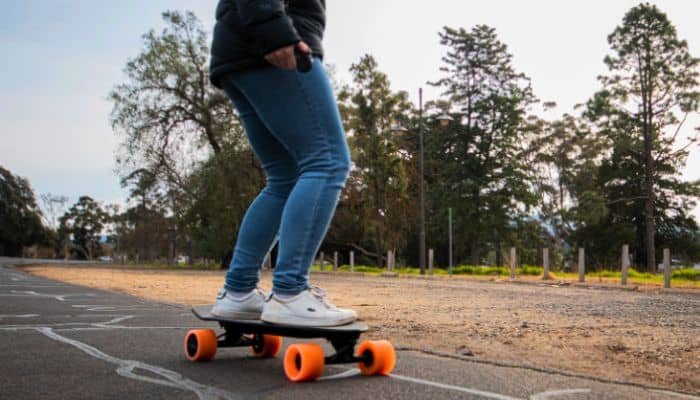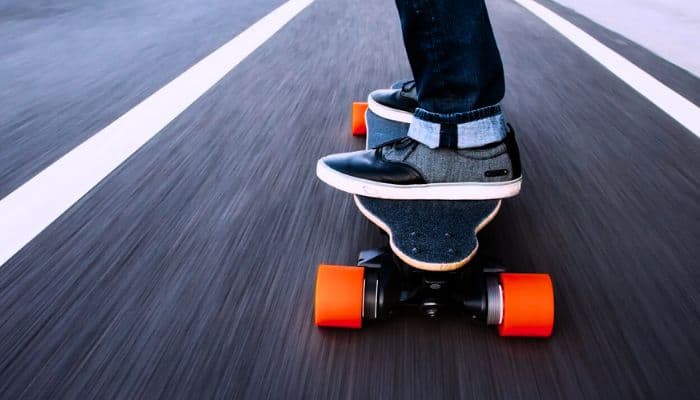Electric skateboarding, blending the thrill of skateboarding with the advancements of electric propulsion, has become a popular activity for enthusiasts and commuters alike. However, beginners often encounter a learning curve. In this two-part series, we’ll explore common mistakes new electric skateboarders make and provide practical tips to avoid them, ensuring a safer and more enjoyable ride.
Mistake 1: Neglecting Safety Gear
One of the most common and critical mistakes is overlooking the importance of safety gear.
The Consequences:
Ignoring safety gear can lead to serious injuries. Electric skateboards can reach high speeds, and falls are inevitable, especially for beginners.
How to Avoid:
Always wear a helmet, regardless of how short the trip is. Invest in quality knee pads, elbow pads, and wrist guards. Consider padded shorts and a spine protector for extra safety.
Mistake 2: Overestimating Abilities
Many beginners overestimate their skateboarding skills, leading to risky maneuvers and accidents.
The Consequences:
Overconfidence can result in losing control, crashing, or colliding with obstacles or pedestrians.
How to Avoid:
Start slow. Familiarize yourself with the board’s response at different speeds. Gradually increase your speed as you become more comfortable and always ride within your skill level.
Mistake 3: Poor Stance and Foot Position
Incorrect stance and foot positioning can affect balance and control.
The Consequences:
A wrong stance can make it difficult to maneuver the board, leading to instability and falls.
How to Avoid:
Adopt a comfortable stance with your feet shoulder-width apart. Place your front foot near the front trucks and your back foot near the rear trucks. Keep your knees slightly bent for better balance.
Mistake 4: Ignoring Board Maintenance
Like any electronic device, electric skateboards require regular maintenance, which beginners often neglect.
The Consequences:
Neglecting maintenance can lead to mechanical failures, reduced performance, and safety hazards.
How to Avoid:
Regularly check and tighten the trucks and wheels. Keep the bearings clean and lubricated. Inspect the battery and electrical connections and ensure the firmware is up-to-date.
Mistake 5: Improper Braking Techniques
Many beginners struggle with braking, either braking too harshly or not effectively.
The Consequences:
Abrupt braking can cause the rider to be thrown off balance or off the board. Ineffective braking can lead to collisions.
How to Avoid:
Practice gradual braking in a safe, open area. Learn to anticipate stops and start braking well in advance. Use regenerative braking to your advantage.
Mistake 6: Not Planning Your Route
Failing to plan the route can lead to unexpected challenges on the road.
The Consequences:
Unfamiliar routes may have hazards like steep hills, rough terrains, or heavy traffic, which can be dangerous for inexperienced riders.
How to Avoid:
Plan your route before you head out. Use apps to check the terrain and traffic conditions. Start with familiar, less crowded routes.

Mistake 7: Poor Battery Management
As riders become more comfortable, they often overlook the importance of battery management.
The Consequences:
Mismanagement can lead to running out of power mid-ride, reduced battery lifespan, or even damage to the skateboard’s electrical system.
How to Avoid:
Regularly check your battery level before and during rides. Avoid completely draining the battery and recharge it after each ride. Store the skateboard in a temperature-controlled environment to preserve battery health.
Mistake 8: Ignoring Weather Conditions
Ignoring weather forecasts can lead to challenging and unsafe riding conditions.
The Consequences:
Wet or icy conditions can drastically reduce traction, increasing the risk of slips and falls. Electronic components are also susceptible to water damage.
How to Avoid:
Always check the weather forecast before heading out. Avoid riding in rain, snow, or extremely cold temperatures. If caught in unexpected weather, reduce speed and take extra caution.
Mistake 9: Not Adapting to Traffic and Pedestrians
Failing to adapt riding style in traffic and around pedestrians is a common oversight.
The Consequences:
This can lead to accidents, close calls, or negative interactions with pedestrians and drivers.
How to Avoid:
Be vigilant in traffic-heavy areas. Use hand signals to indicate turns or stops. Give pedestrians the right of way and maintain a safe distance. Ride at a speed where you can safely react to unexpected obstacles.
Mistake 10: Inadequate Turning Skills
Even experienced riders sometimes struggle with efficient turning, especially at higher speeds.
The Consequences:
Poor turning skills can lead to loss of control, especially when trying to navigate around obstacles or through tight spaces.
How to Avoid:
Practice carving and turning at various speeds in a safe area. Focus on shifting your weight smoothly and maintaining balance. Gradually increase the sharpness and speed of your turns as you become more confident.
Mistake 11: Neglecting Skateboarding Fundamentals
Some electric skateboarders rely too much on the power of the board and neglect basic skateboarding skills.
The Consequences:
This can limit your ability to ride effectively in different scenarios, especially if you need to kick-push due to battery depletion.
How to Avoid:
Spend time riding a traditional skateboard to develop a better sense of balance and control. Practice kick-pushing and manual riding without relying on the electric motor.
Mistake 12: Complacency in Learning
Complacency can set in as riders become more confident, leading to a plateau in skill development.
The Consequences:
This can halt progress and increase the risk of accidents due to overconfidence.
How to Avoid:
Continuously challenge yourself by trying new routes, techniques, and even participating in community rides. Stay updated with the latest safety guidelines and advancements in electric skateboarding technology.
Conclusion
By recognizing and addressing these advanced mistakes, you can elevate your electric skateboarding skills to new heights. Remember, the journey of improvement never truly ends. Stay curious, practice regularly, and always prioritize safety. Enjoy the ride, and keep pushing your limits!

